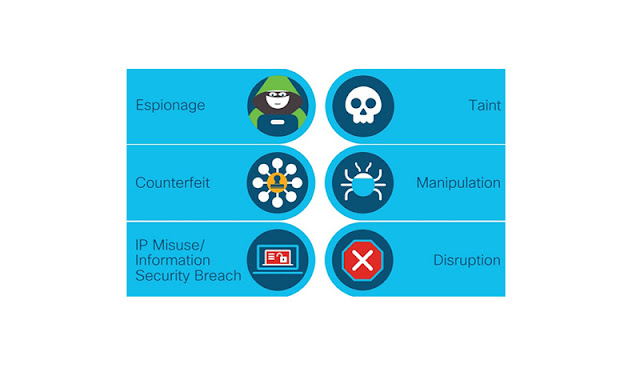Part 3: Developing a Culture of Trust
In my two previous posts on the topic of trustworthy networking, I’ve focused on the multiple technologies Cisco designs and embeds into all our hardware and software and how they work together to defend the network against a variety of attacks. I explored how it’s not just about the trust technologies but also about the culture of trustworthy engineering that is the foundation of all that we do. In this post I’ll focus on how Cisco builds and maintains a culture of trustworthiness.
But first, what is culture? What is does trustworthy mean? Just as there are a diversity of human societies, there are different characterizations of culture and trust.
Fusing several definitions, we can summarize culture as:
◉ The quality in a person or society that arises from a concern for what is regarded as excellent in arts, letters, manners, scholarly pursuits, etc. and provides important social and economic benefits.
◉ Culture enhances our quality of life and increases overall well-being for both individuals and communities.
Trustworthy is another word with a variety of implications:
◉ Trust describes something you can rely on, and the word worthy, describes something that deserves respect.
◉ Trust is intangible – it is an intellectual asset, a skill, and an influencing power for leaders. Showing trustworthiness by competence, integrity, benevolence, and credibility makes a difference in daily leadership work.
◉ Trustworthy describes something you can believe in — it’s completely reliable.
Therefore, a culture of trustworthiness provides a consistent approach to designing, building, delivering, and supporting secure products and solutions that customers can rely on to “do what they are expected to do in a verifiable way”. When engineers approach product design and development with integrity and security of product functionality and ensure the safety of customer data from day one of a project, then the outcome has an excellent chance of being trustworthy. Let’s look at how Security Leadership permeates Cisco culture with reliability and credibility through education, social contracts, and a strict adherence to Cisco Secure Development Lifecycle (CSDL).
A Culture of Trustworthiness Starts with Continuous Security Education
Designing trustworthy networks requires a commitment to professional improvement with deep learning into secure technologies, threat awareness, and industry-standard principles. At Cisco this education starts with levels of Cisco Security Space Center program that every employee and contractor must complete to various levels of proficiency depending on their jobs. To date, over 75,000 people in the Cisco workforce have completed the required levels of Security training. This greatly increases security awareness throughout the organization. It also gives the workforce a common language to discuss the principles of trustworthy design and support.
Pervasive cultural security also requires a legion of advocates inclusive of Cisco employees, vendors, partners, and customers. For example, embedded in every aspect of engineering are Security Advocates who advise, monitor, and report on the implementation of trustworthy security processes. Advocates pride themselves as having a thorough understanding of Cisco Security Space Center training. Security and Vulnerability Audits provide assurance that CSDL is followed and as problems are uncovered during the development and testing cycle they cannot be ignored. Audit teams reports not to engineering management but to the C-suite to ensure that problems are completely fixed or a release red-lighted until they are remediated. This is another example of a culture of trust that permeates across functional departments all the way to the C-level—all in service of protecting the customer.
Threat modeling is another skillset reinforced through training and applied consistently throughout the development lifecycle. It represents a repeatable process for identifying, understanding, and prioritizing solution security risks. Engineers analyze external interfaces, component interactions, and the flow of data through a system to identify potential weaknesses where solutions might be compromised by external threats.
Development security policies not only set the rules for protecting the organization, but also protect investments across people, processes, and technology.
◉ Employee and supplier codes of conduct are signed annually to keep people focused on the importance of trust and their promise to deliver secure products across the value chain and never intentionally do harm.
◉ Enterprise information security and data protection policies are aligned with security standards like ISO 27001.
◉ Using site audits to continuously monitor Cisco and partner development properties ensures that physical security policies—such as camera monitoring, security checkpoints, alarms and electronic or biometric access control—are being maintained.
◉ Data protection and incident response policies are available to customers to help them understand the processes Cisco has in place to protect their data privacy and the actions that will be taken should a data breach occur.
◉ The Product Security Incident Response Team (PSIRT) is independent from engineering and is critical to keeping an unbiased watchful eye on all internally and externally developed code. Anyone at Cisco, customers, and partners can report security issues in shipping code and be assured that they will be logged and addressed appropriately.
Tailoring Cisco Secure Development Lifecycle (CSDL) to Solution Type
We examined the Cisco Secure Development Lifecycle in Part 1 of this series but considering how rapidly networks are evolving to accommodate “data and applications everywhere” and the dispersal of the workforce from campus environments, it deserves another look relating to the culture of trust. The constantly evolving development techniques that are needed to address emerging security threats resulting from these increasingly dispersed workplace. The evolving workforce means that secure development processes must be adapted depending on the type of solution and where they are deployed:
◉ on-premises networking device
◉ appliance running application
◉ network controller/management
◉ application running in the cloud
◉ combination of on-prem and cloud; aka hybrid cloud.
During development, engineers are trained to approach each of these according to the end deployment. For example, standardized toolsets, such as Cisco Cloud Maturity Model (CCMM), provide a consistent method to assess the quality of all of Cisco’s SaaS offerings. It includes evaluations of many quality attributes, such as availability, reliability, security, scalability, etc. CCMM provides a quantitative and standardized method to gauge the health of all Cisco cloud offerings.
Infusing a Culture of Trust Throughout the Value Chain
If a trustworthy culture stopped at the walls of Cisco and the minds of our employees, there would still be room for bad actors and malicious code to wreak havoc. That’s why Cisco extends our trustworthy principles to partners and suppliers throughout the value chain. We strive to put the right security in the right place at the right time to continually assess, monitor, and improve the security of our value chain throughout the entire lifecycle of Cisco solutions.





















